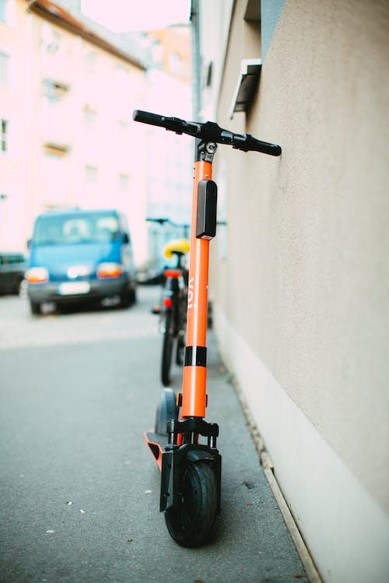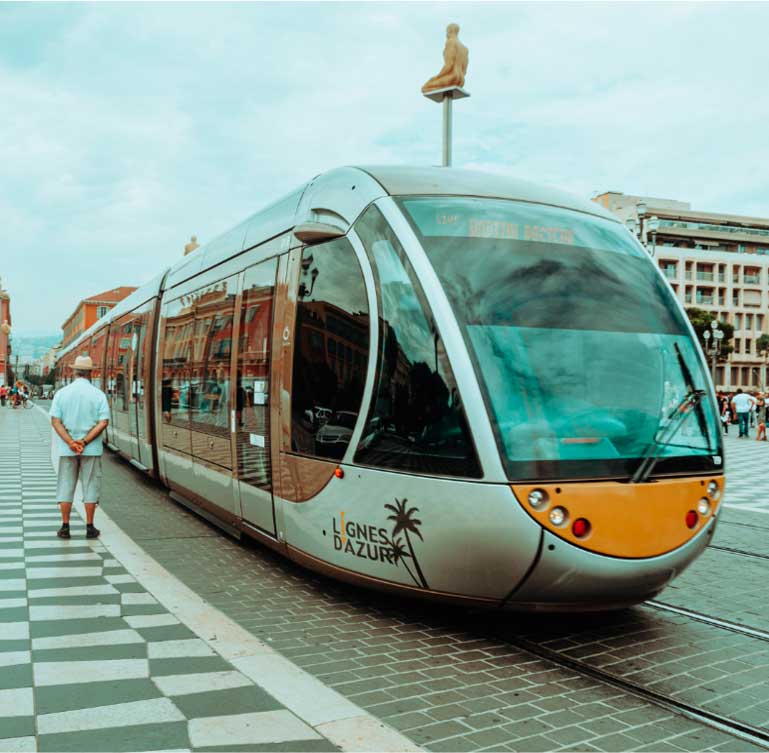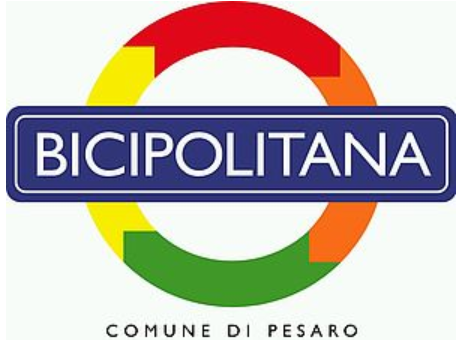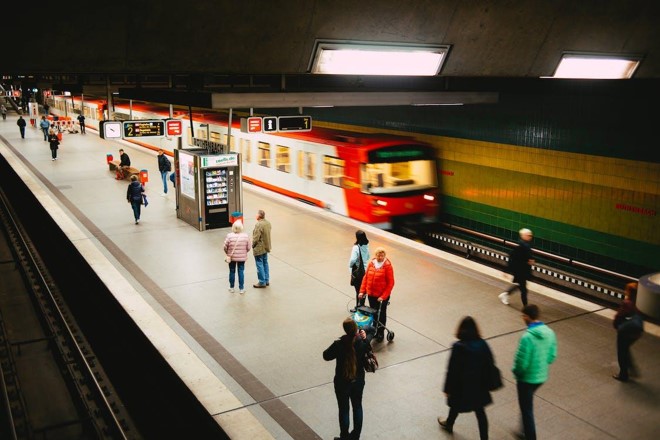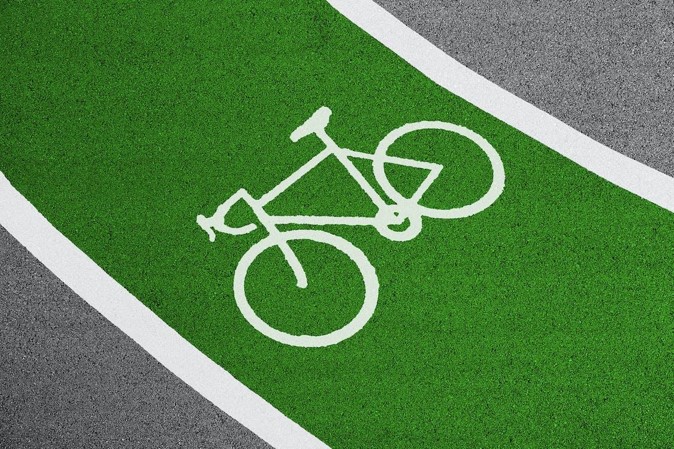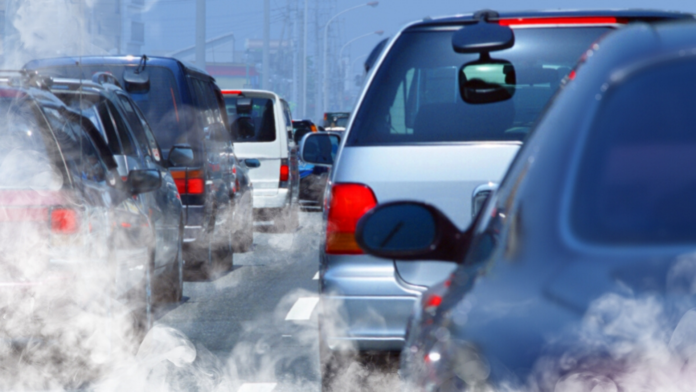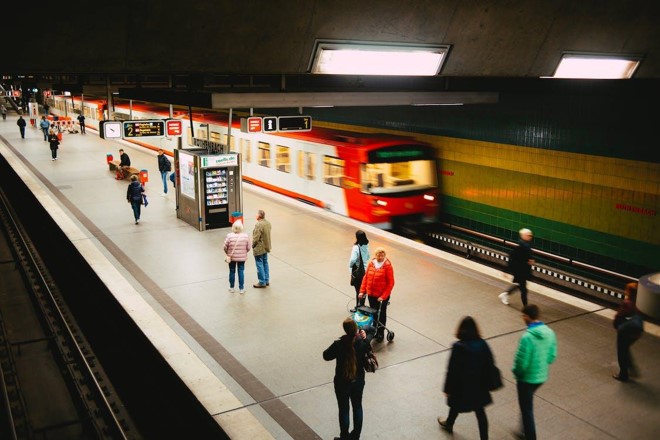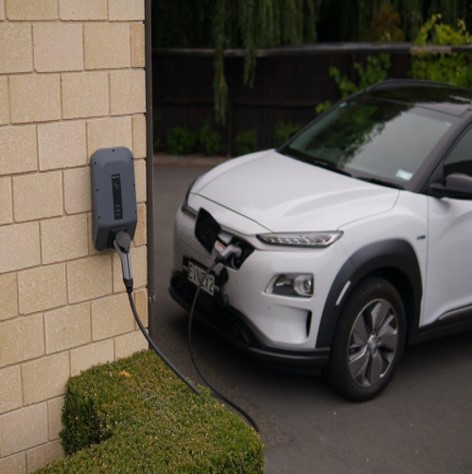EduCARE
Responsible consumption on mobility
Advanced|
VIDEOS

| ||||||||||||||||||||||
|
Responsible consumption on mobilityClick to read
 Introduction:
Responsible consumption in mobility behavior means knowing the impact of one's daily behavior on one's own wellbeing, on the collective wellbeing and on the environment, and then learning how to implement responsible and sustainable behavior, how to change one's lifestyle, using the resources available efficiently. The increase in noise pollution in cities, the contamination of the soil and the air with toxic substances and the waste of material and energy resources are driving people towards new behaviors that are increasingly attentive to sustainability and circularity especially in mobility choice. Consumers, especially the younger generations, are paying increasing attention to issues that concern the future of the planet and they are the real engine of sustainability through lifestyle choices, habits and consumer behavior, they have the power to drive the market from the bottom up, and more generally, create a social context that is favorable to actions to safeguard our planet. Topic development:Growing environmental movements have brought attention to the issue of emissions and electric cars. In the meanwhile, many customers are now debating whether they still need to buy a car due to the digital disruption brought on by ridesharing services. New trends are emerging, including micro mobility OEMs switching to direct-to-consumer sales rather than B2B, such as e-scooters, e-bikes, etc. Offering daily, monthly, or even yearly rental options, the pervasive mobility sharing platforms (like Lime) are also altering their business structures to take into account new customer requirements. Travel is likely to be impacted by several larger mobility trends, including adjustments to the frequency and mode of travel. Some of the new consumer trends on mobility will be: An increasing commitment to sustainability. To combat climate change, governments are stepping up their regulatory efforts, implementing carbon levies and banning short-haul flights. Businesses have set lofty goals to lessen their negative effects on the environment, and consumers are also seeking for methods to travel less and embrace more environmentally friendly modes of transportation.
Changing Work Habits. Many of the pandemic's new methods of operation are probably going to stick around, at least in part. Many workers anticipate that they will continue working from home, and that they will do so more frequently than they did before the epidemic because to technologies like virtual meetings and remote conferencing. Moreover, in order to live a healthier lifestyle, battle a sedentary lifestyle, and keep up their physical fitness, those who commute to work on foot or by bicycle do so. Even your mental health will improve by parking the car in the garage. Bicycling relieves tension, and individuals taking public transportation are more at ease and have more time to read or interact with others. Additionally, a variety of chronic ailments can be brought on by the pollution that our city's cars emit. In actuality, driving your own automobile into the city is ten times less safe per mile than using sustainable public transportation. By using public transit, commuters can also reduce their risk of getting into an accident by more than 90%. It accounts for 1.35 million fatalities per year and is the leading cause of mortality for kids and young adults between the ages of 5 and 29. Road accidents cause millions of injuries and disabilities each year. Sustainable mobility is largely dependent on safe mobility. Good practices:Citizens’ involvement in the LTZ congestion charge The so-called "Area C" (also known as LTZ) of Milan has 77,950 inhabitants and occupies an area of 8.2 km2, or 4.5% of the Municipality of Milan's overall territory. The activities and services that have been established give the region an exceptional allure. During the core daytime hours, there are an average of 39.000 people per square kilometer there, with a peak of about 140.000 people per square kilometer in the historic center. This excellent practice relates to the implementation of a congestion fee, which demonstrated a very good participatory project involving the entire local population and achieved excellent results in terms of traffic reduction, increased safety, and decreased pollution throughout the area and in the surrounding areas.
Amadora, Portugal, was a finalist for the European Mobility Week 2021 prize recently, which was sponsored by the European Commission. This Lisbon-area city of more than 170,000 people was recognised as deserving of the honour for putting up significant initiatives to make the city greener and safer. In particular, Amadora's administration was able to establish promotional collaboration plans with nearby merchants and involve all age groups into sustainable mobility activities like bicycle tours and electric car tests. The acknowledgement by the European Commission implicitly recognises Portugal's dedication to increasing two-wheeler use and sustainable tourism. Current and future challenges:The triple planetary crises of climate change, biodiversity loss, and pollution are all caused by unsustainable patterns of production and consumption. The wellbeing of people and the accomplishment of the Sustainable Development Goals are threatened by these crises and the associated environmental degradation. To increase resource efficiency, lessen waste and pollution, and create a new circular economy, governments and all citizens should collaborate. The expectations of customers for their travels and the modes of transportation they intend to employ vary depending on the nation.
A BCG survey showed that, based on consumer travel expectations and the popularity of various modes of transportation, four possibilities (the pandemic accelerates trends, the pandemic causes demand to decline, policymakers reimagine the future, consumers return to prepandemic habits) for the future of travel in Europe have developed. By 2025, passenger kilometers traveled will have surpassed 2019 levels if the growth rate maintains its pre-epidemic course. The recovery of volume will take longer if the new consumer trends catch on and become established. Automobile manufacturers, train companies, and airlines must be prepared for all eventualities. Their survival and ongoing success will depend on their ability to anticipate new demands and respond to consumer needs. Further references:https://masschallenge.org/article/mobility-trends The weight of the economy in MobilityClick to read
 Introduction:
Transportation stakeholders usually focus on user prices and low production costs to increase competitiveness, without taking into consideration that cost reductions increase demand for transportation, leading to negative environmental impacts and infrastructure shortages/congestion, depending on the region. A solution to this issue is to invest in transport eco-innovations, which produce economic long-term benefits that out-weight short-term losses. Moreover, from a macro-economic perspective eco-innovation can also help to relieve market failures. For this reason, when assessing economic impacts of sustainable mobility it is necessary to move away from the common one-dimensional approach (the user prospective) and introduce multiple perspectives (e.g., the macro-economy, the distribution of impacts across social groups or across regions, global competitiveness.). Impacts/Benefits:To facilitate an effective and sustainable introduction of eco-innovations municipalities should adopt a Sustainable Urban Mobility Plan. SUMPs are initiatives promoted by the European Commission as a new planning concept able to address transport-related challenges to reach EU climate and energy targets and create more sustainable transportation system. The economic aspects of sustainable mobility are undoubtedly relevant for making policy choices and a SUMP can produce concrete economic benefits; for instance, it improves efficiency and cost-effectiveness of the transport system. Cost effectiveness can be calculated by measuring the amount of money spent to save CO2 and the investment required for each SUMP’s measure implemented. Current economic analyses mainly focus on:
- Cost-benefit analysis (CBA), which generates the highest impact in users (time savings or cost changes due to taxes paid by the transport users) -Total cost of ownership (TCO) of owning and using a vehicle, which usually estimates the balance between increased investment costs and decreased energy costs from a user perspective. The common assumption that the user perspective is the comprehensive basis for policy making in sustainable mobility should be challenged. When analyzing the economic impacts additional dimensions should be considered (sectoral, macro-economy, societal, distributional, authority and government). Good practices:
The BICIPOLITANA is an initiative developed in the city of Pesaro (IT) in the framework of a Sustainable Urban Mobility Plan. It refers to an underground metro that uses bicycles as the cars and bicycles as the rails. The system being employed is common to metros around the globe. Different regions of the city are connected by lines (yellow, red, green, orange, etc.), making it possible to travel quickly without spending any money, causing any pollution, or adding any stress. The Bicipolitana is being built; some lines have already been built, others will be finished soon, and yet others will take more time. Current and future challenges:Passenger traffic will approach 80,000 billion passenger km by 2030, representing a 50% increase, while freight volume will climb by 70% globally.
The COVID-19 pandemic-related crisis should be used as an opportunity to speed up the decarbonization and modernization of the entire transportation and mobility system. The green and digital transitions should reshape the sector, redraw connectivity, and reinvigorate the economy. The Commission recognises that this transformation, which must be socially just and fair, will not happen quickly and will require the full commitment and support of all transport actors, as well as a significant increase in investment from the public and private sectors that will spur growth. The transportation sector should serve as a showcase for European ingenuity and tenacity, leading the way in research, innovation, and entrepreneurship and guiding the twin transitions. Both the Green New Deal and the 2030 Agenda can contribute to the development of more sustainable transportation networks. SDG 11.2 aims to provide safe, affordable, and sustainable transportation systems for everyone by 2030. A part from cost-efficiency, the plan is to make transportation safer and more accessible for everyone, including vulnerable groups, by improving public transportation and road safety. Mobility and the citizens, the society, the cultureClick to read
 Introduction:
In 1950, there were two cities with populations of more than 10 million in the world. According to estimates, by 2030, there will be 53. These megacities are also merging into megaregions. The Pearl River Delta (Hong Kong-Shenzhen-Guangzhou region) in China has a total population of 120 million people. And cities such as Tokyo, Istanbul, Sao Paulo, Delhi and New York City are the anchors for megaregions with populations in the tens of millions. This growth brings challenges like urban sprawl. Outlying areas are cheaper, so the people who live there tend to be on lower incomes. But limited transport can make it hard for them to access jobs in the city centre – adding to income inequality. More people also mean more vehicles and pollution, which makes cities less liveable. Impacts/Benefits:1) Smart Mobility, Strong Economy: The Effects of Sustainable Mobility on Economic Development. Sustainable transportation has a significant and adequately proved economic benefits such as the creation of new local businesses, with direct benefits on local communities. 2) Healthier lifestyles and sustainable transportation. In order to live a healthier lifestyle, battle a sedentary lifestyle, and keep up their physical fitness, those who commute to work on foot or by bicycle do so. 3) Eco-Friendly Mobility to protect the environment. Developing greener urban plans with less polluting traffic can encourage the use of open spaces where outdoor activities can improve the quality of social life for citizens.
4) Reducing noise pollution. Roads, railroads, and airports are undoubtedly some of the biggest sources of annoyance when it comes to the transportation infrastructure that produces high noise levels. Although it receives less attention, noise pollution has a number of negative effects on people's health and wellbeing, including sleep problems, elevated blood pressure, and heart conditions. 5) New job opportunities. The development of sustainable transport is also very equitable because it calls for the expertise of designers, innovators, construction professionals, maintenance workers, drivers, safety managers, and many more individuals with a wide range of abilities. Good practices:Development of a Mobility Monitoring Centre for the Metropolitan area in Thessaloniki, Greece All the municipalities in the Thessaloniki Urban Area, including Thessaloniki, Kalamaria, Delta, Kordelio-Evosmos, Neapoli-Sykies, Pylaia-Chortiatis, Pavlos Melas, and Ampelokipoi-Menemeni, have participated in the implementation of this good practice in the Region of Central Macedonia. With a population of 788,952 people and an urban area of 111.703 km2, Thessaloniki is the second biggest city in Greece. There are more than 777.544 vehicles in the city overall, including motorbikes, big trucks, and private automobiles.
The mayor of Paris, Anne Hidalgo, is in her second term and is known throughout Europe as a politician who promotes active transportation and discourages driving. In reality, the French capital is making investments in the urban fabric to guarantee that the majority of the city's residents can access the facilities they require—such as shops, parks, and schools—within a quarter-hour of their homes. Translating this into reality requires investing in local public transport, building cycle paths and, in the Parisian vision, even introducing blanket speed limits for cars (in Paris, you cannot drive faster than 30 km/h on most urban roads). Current and future challenges:
In order to address human demands today without sacrificing those of future generations, the social process of sustainable development integrates social, economic, and environmental aims. In an effort to increase efficiency, the transportation industry is going through a complete revolution. This development has important economic and societal ramifications. Nevertheless, users, decision-makers, and businesses are faced with uncertainty as a result of advances in technology and mobility. As a result, it's critical to examine technology and the patterns that surround them in order to obtain a basic understanding of new functions and social benefits that might change current mobility trends for the better. However, because of pollution, traffic congestion, and socioeconomic inequality, mobility as we know it now has negative effects on global warming and health. In practice, road travel is the main source of 14% of global greenhouse gas emissions, with that number rising to 25% to 27% in wealthy countries. Researchers are striving to find new mobility solutions, social behavioral changes, autonomous vehicles, new laws, and alternatives to motorization to address these problems. Further references:https://www.oecd.org/stories/social-mobility/ https://digital-strategy.ec.europa.eu/en/policies/mobility-data Environmental sustainability in mobilityClick to read
 Introduction:
Where transportation is frequently given as a service, cities are aiming to offer digital, clean, intelligent, autonomous, and multimodal mobility with more walking and cycling spaces. In this particular location, cities should prepare for significant disruption. Robotic taxis, flying passenger drones, for city-underground tunnels, are just some of the innovations that may emerge in the future of mobility. to abandon driving a car. User-centeredness is the main focus of a change in the dynamics of global urban transportation. Electrification, autonomous driving, smart and connected infrastructure, modal diversity, and mobility that is integrated, resilient, shared, and sustainable - powered by disruptive business models - will all further the trend of major changes in how people move around in cities over the next ten years. 54 percent of city executives confessed in response to an ESI Thoughtlab study that they will reevaluate mobility and transportation in the wake of the COVID-19 outbreak. Impacts/Benefits:Innovative urban transportation and planning solutions contribute to the development of a future that is practical, linked, approachable, and sustainable. Here are some of the benefits of more RC in mobility:
- Enhance quality of life while minimizing environmental impact: As a result of COVID-19, new mobility models, notably non-motorized versions, are widely adopted. - Reduce traffic and air pollution: According to recent research conducted by ESI ThoughtLab, smart urban mobility solutions can assist cities in reducing traffic congestion. Investment in technologically advanced transportation solutions need to be a top focus. Congestion, air pollution, and noise levels will all be reduced as a result of ride sharing and a decline in the number of private vehicles on the road. - Increase traveler convenience: Smart-safe mobility solutions offer highly automated, integrated, and data-powered services that improve the lives of individuals. Due to this, sophisticated safe-mobility features that protect user data are also required. - Decreases the frequency of accidents and saves lives: Averaging 3,700 fatalities each day, traffic accidents claim the lives of almost 1.35 million people annually. The number of fatalities will decline as mobility changes. - Encourage more efficient use of public space because fewer rides mean fewer cars on the road and parking spaces. As a result, spaces may be used for social interaction, allowing for greater utilization of public space. Good practices:MaxLupoSE: application of mobility management and land use planning guidelines in a network of 12 cities in Sweden. This good practice was implemented in twelve municipalities, representing towns from the north to the south of Sweden, all small- and medium-sized towns. It deals with the integration of mobility management in the planning process, representing a good way to enhance sustainable mobility and an innovative approach. MaxLupo explains and provides examples of policies to better integrate sustainable transport with the land use planning process and the way to better integrate MM with land use planning. Every municipality implemented one or more principles reported in the MaxLupoSE guidelines.
It is a free indicator created by Enel X in partnership with the University of Siena that is exceptional on the Italian scene because it is entirely based on open data. It is able to assess the starting level of urban circularity of all Italian municipalities while attempting to strike the best possible balance between the diversity present on the territory in terms of population and territorial extension. The model was developed following an extensive review of Open Data from national sources, allowing the study to be expanded to include all of Italy. Four important aspects are examined to determine the amount of circular maturity: digitalization, environment and energy, transportation, and waste. Current and future challenges:It is expected that in general people will travel less than in the past.
In community neighbourhoods, bicycles, scooters, and even walking will become more popular modes of transportation. The coronavirus epidemic has led to an unparalleled investment in cycling across Europe, from Bucharest to Brussels and from Lisbon to Lyon. Between the start of the epidemic and October 2020, 2,300 kilometers (1,400 miles) of additional bike lanes were installed. More than EUR 1 billion has been invested on cycling-related infrastructure. Furthermore, Electric vehicles (EVs) are predicted to account for around 32% of all new automobile sales globally by 2030. Sustainable transport is incorporated into various Sustainable Development Goals (SDGs) and targets in the 2030 Agenda for Sustainable Development, including those connected to food security, health, energy, economic growth, infrastructure, and cities and human settlements. One of the most important developments of the twenty-first century is urbanisation. More than half of the world's population already resides in cities, and by 2050, that number is projected to rise to 70%. Cities are the engines of regional and national economies because they are the hubs of prosperity where more than 80% of all economic activity occurs worldwide. Major problems are also brought on by urbanisation. There are some critical issues that should be taken into account for a successful implementation of sustainable mobility. Further references:https://www.consilium.europa.eu/en/policies/clean-and-sustainable-mobility/ https://transport.ec.europa.eu/transport-themes/mobility-strategy_en How to become a more responsible consumer of MobilityClick to read
 Introduction:
Cities drive local and national economies, as hubs of prosperity where more than 80% of global economic activity is concentrated. This is why citizens in urban areas are at the centre of change and must also be the target audience for both awareness-raising policies and the enhancement of sustainable forms of mobility. -On the demand side, it is necessary to make local public transport more efficient in order to stimulate demand for sustainable mobility, for example, by introducing a bonus on season tickets, disincentivising car use and creating digital platforms to facilitate the planning of journeys and the choice of means of transport also on the basis of the pollutant and climate-changing emissions produced; -On the supply side, the tools include more funding for Local Public Transport (LPT), infrastructure investments (trams, metros and urban railways) to increase the supply of rail modes, strengthened transport nodes, cycle paths and pedestrian routes. Tips and recommendations todo /Not to do:For there to be an ecological transition in society, it is necessary for politics to address the following issues and direct its choices towards:
It is also of utmost importance that policy acts locally at a global level by aligning with policies at the European and global level. By combining the global and local perspective, policy makers will be able to make the necessary changes to the territory they represent according to the specificities and characteristics of that space.
At the local level, we have other key players in this great challenge and they are the citizens. Citizens can actively contribute to progress with, for example:
Further references:https://seyccat.org/what-steps-are-we-taking-towards-responsible-consumption-and-production/ https://www2.deloitte.com/global/en/pages/tax/covid-19/resilient-tax-leader-article.html https://greenglobaltravel.com/green-travel-tips-ultimate-guide-sustainable-travel/ https://ec.europa.eu/futurium/en/system/files/ged/promoting_behaviour_change.pdf |
Area
Mobility
LevelAdvanced
KeywordsSustainable mobility – responsible consumption – mobility trends – consumer’s attitude
 Play the game
Play the game Send us your opinion!
Send us your opinion! Play Audio
Play Audio 

